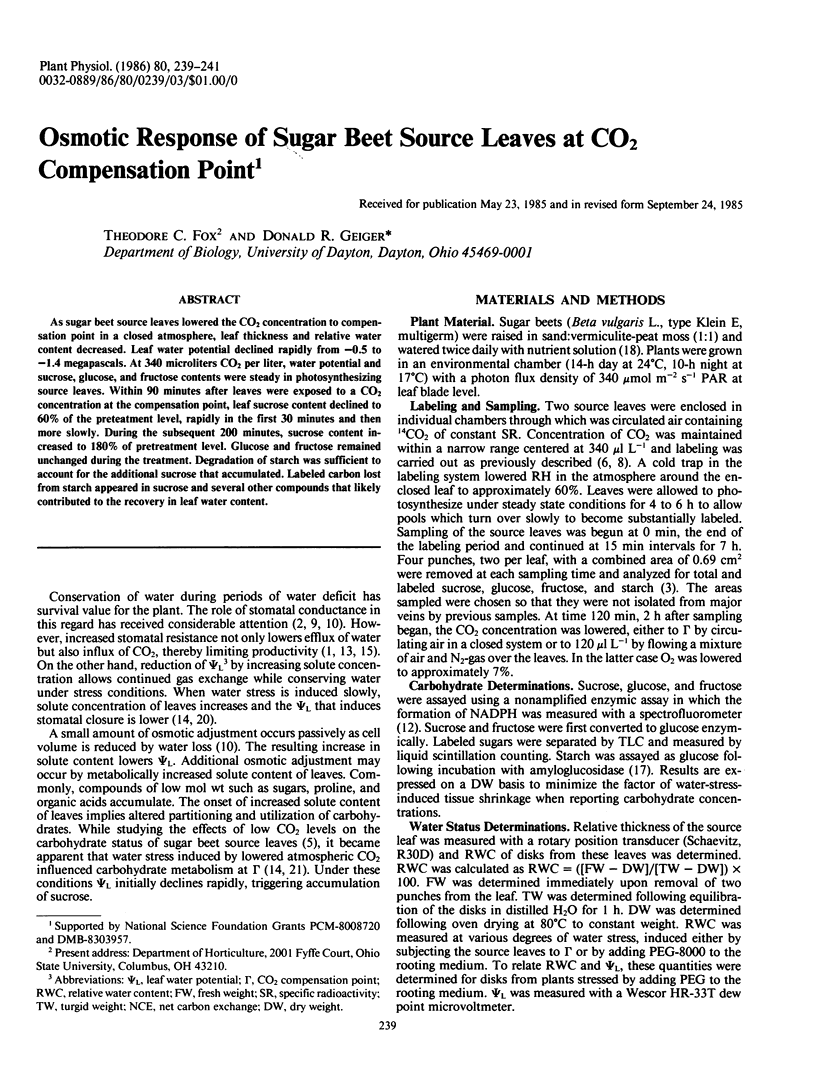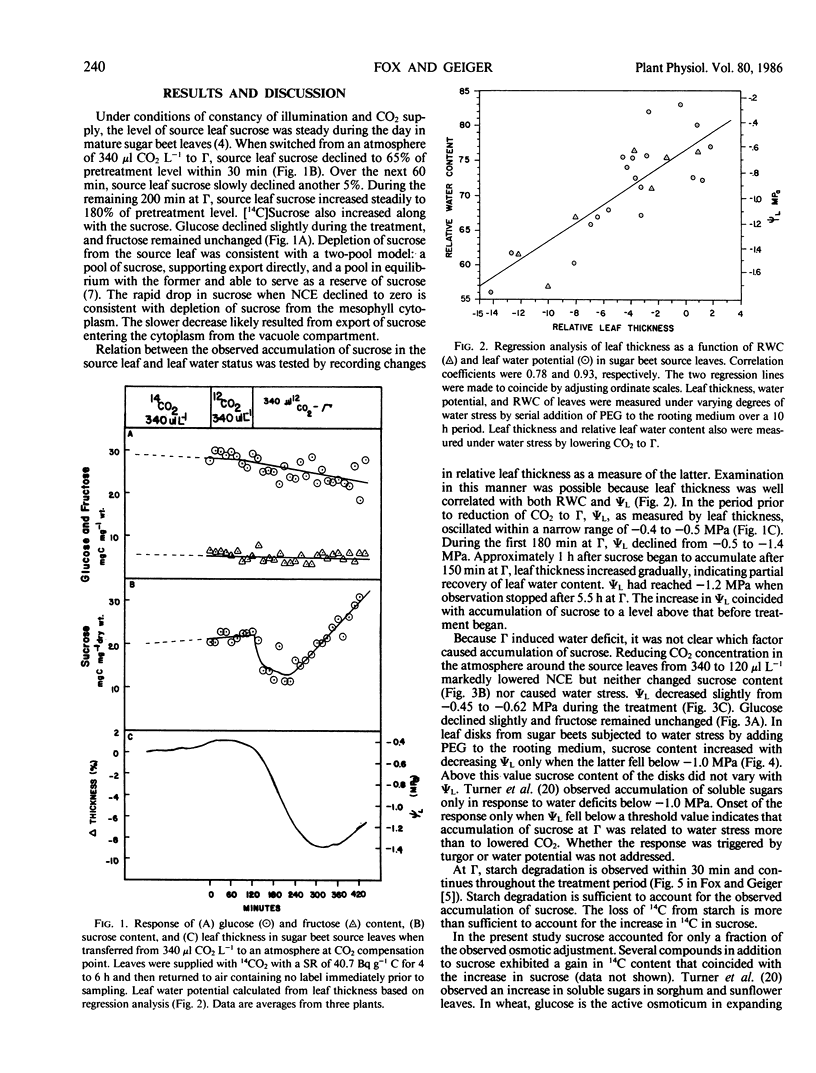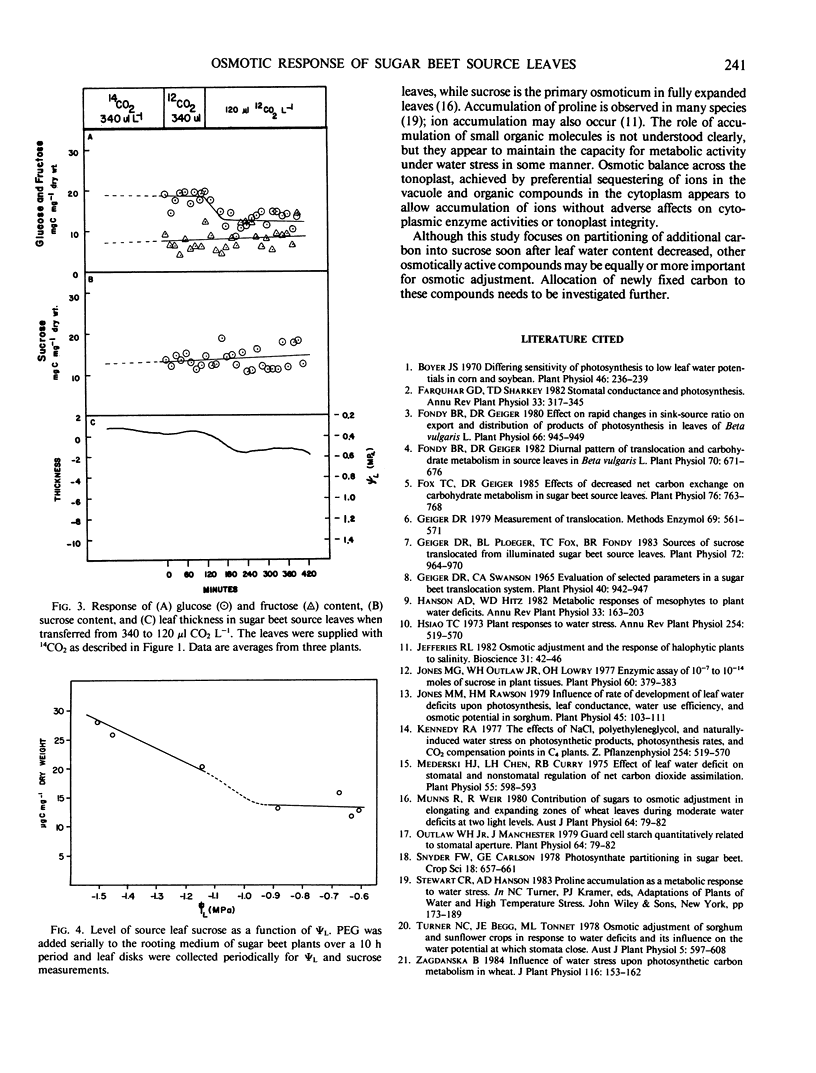Abstract
As sugar beet source leaves lowered the CO2 concentration to compensation point in a closed atmosphere, leaf thickness and relative water content decreased. Leaf water potential declined rapidly from −0.5 to −1.4 megapascals. At 340 microliters CO2 per liter, water potential and sucrose, glucose, and fructose contents were steady in photosynthesizing source leaves. Within 90 minutes after leaves were exposed to a CO2 concentration at the compensation point, leaf sucrose content declined to 60% of the preteatment level, rapidly in the first 30 minutes and then more slowly. During the subsequent 200 minutes, sucrose content increased to 180% of pretreatment level. Glucose and fructose remained unchanged during the treatment. Degradation of starch was sufficient to account for the additional sucrose that accumulated. Labeled carbon lost from starch appeared in sucrose and several other compounds that likely contributed to the recovery in leaf water content.
Full text
PDF


Selected References
These references are in PubMed. This may not be the complete list of references from this article.
- Boyer J. S. Differing sensitivity of photosynthesis to low leaf water potentials in corn and soybean. Plant Physiol. 1970 Aug;46(2):236–239. doi: 10.1104/pp.46.2.236. [DOI] [PMC free article] [PubMed] [Google Scholar]
- Fondy B. R., Geiger D. R. Diurnal Pattern of Translocation and Carbohydrate Metabolism in Source Leaves of Beta vulgaris L. Plant Physiol. 1982 Sep;70(3):671–676. doi: 10.1104/pp.70.3.671. [DOI] [PMC free article] [PubMed] [Google Scholar]
- Fondy B. R., Geiger D. R. Effect of Rapid Changes in Sink-Source Ratio on Export and Distribution of Products of Photosynthesis in Leaves of Beta vulgaris L. and Phaseolus vulgaris L. Plant Physiol. 1980 Nov;66(5):945–949. doi: 10.1104/pp.66.5.945. [DOI] [PMC free article] [PubMed] [Google Scholar]
- Fox T. C., Geiger D. R. Effects of decreased net carbon exchange on carbohydrate metabolism in sugar beet source leaves. Plant Physiol. 1984 Nov;76(3):763–768. doi: 10.1104/pp.76.3.763. [DOI] [PMC free article] [PubMed] [Google Scholar]
- Geiger D. R., Ploeger B. J., Fox T. C., Fondy B. R. Sources of sucrose translocated from illuminated sugar beet source leaves. Plant Physiol. 1983 Aug;72(4):964–970. doi: 10.1104/pp.72.4.964. [DOI] [PMC free article] [PubMed] [Google Scholar]
- Geiger D. R., Swanson C. A. Evaluation of Selected Parameters in a Sugar Beet Translocation System. Plant Physiol. 1965 Sep;40(5):942–947. doi: 10.1104/pp.40.5.942. [DOI] [PMC free article] [PubMed] [Google Scholar]
- Jones M. G., Outlaw W. H., Lowry O. H. Enzymic assay of 10 to 10 moles of sucrose in plant tissues. Plant Physiol. 1977 Sep;60(3):379–383. doi: 10.1104/pp.60.3.379. [DOI] [PMC free article] [PubMed] [Google Scholar]
- Mederski H. J., Chen L. H., Curry R. B. Effect of leaf water deficit on stomatal and nonstomatal regulation of net carbon dioxide assimilation. Plant Physiol. 1975 Apr;55(4):589–593. doi: 10.1104/pp.55.4.589. [DOI] [PMC free article] [PubMed] [Google Scholar]
- Outlaw W. H., Manchester J. Guard cell starch concentration quantitatively related to stomatal aperture. Plant Physiol. 1979 Jul;64(1):79–82. doi: 10.1104/pp.64.1.79. [DOI] [PMC free article] [PubMed] [Google Scholar]


